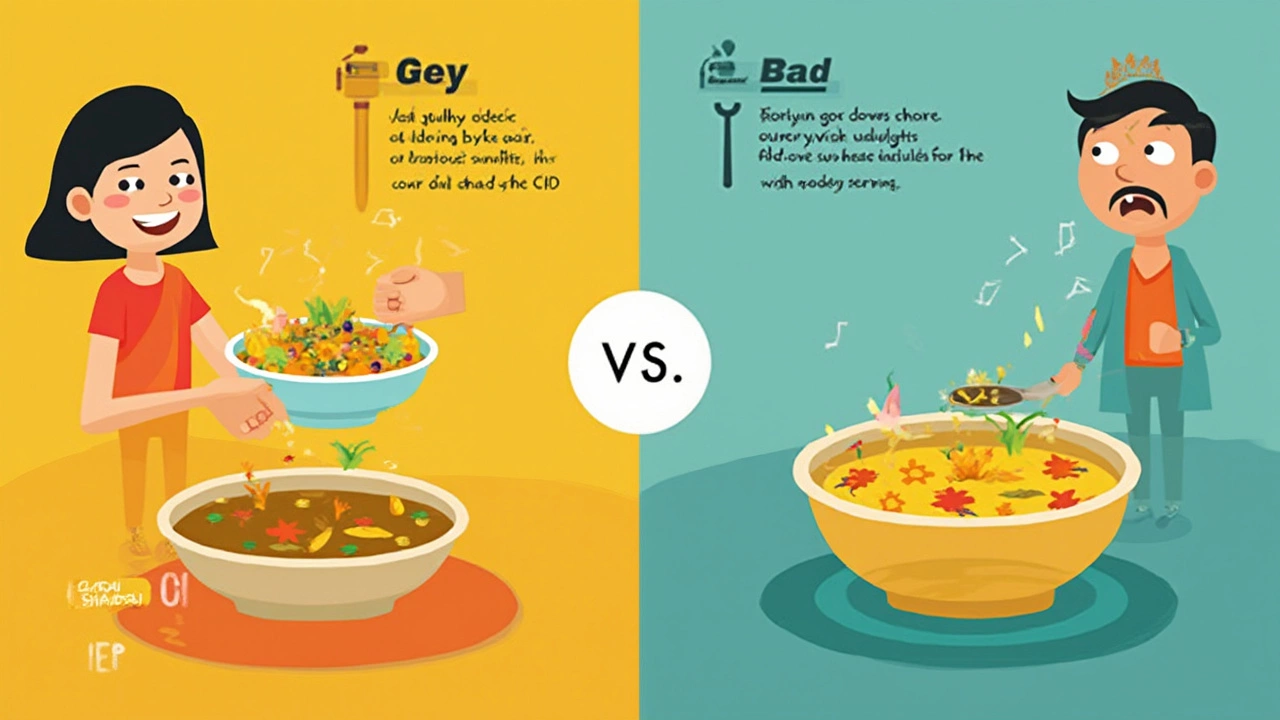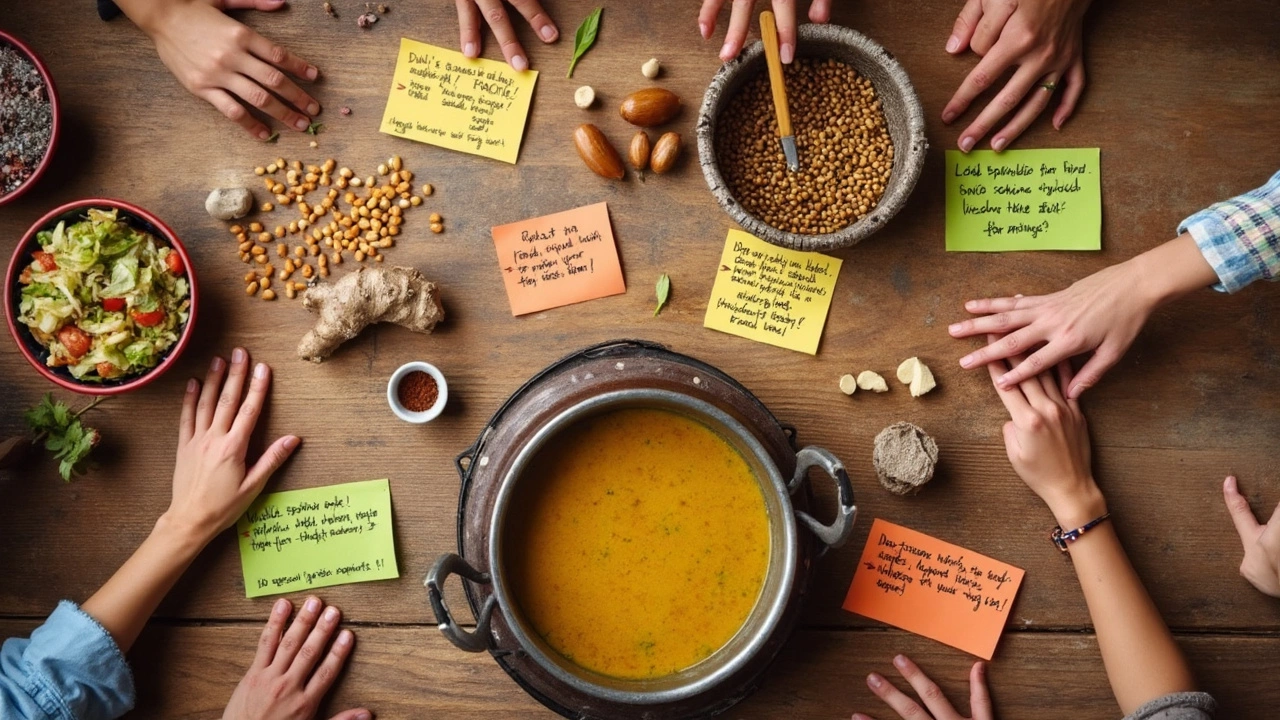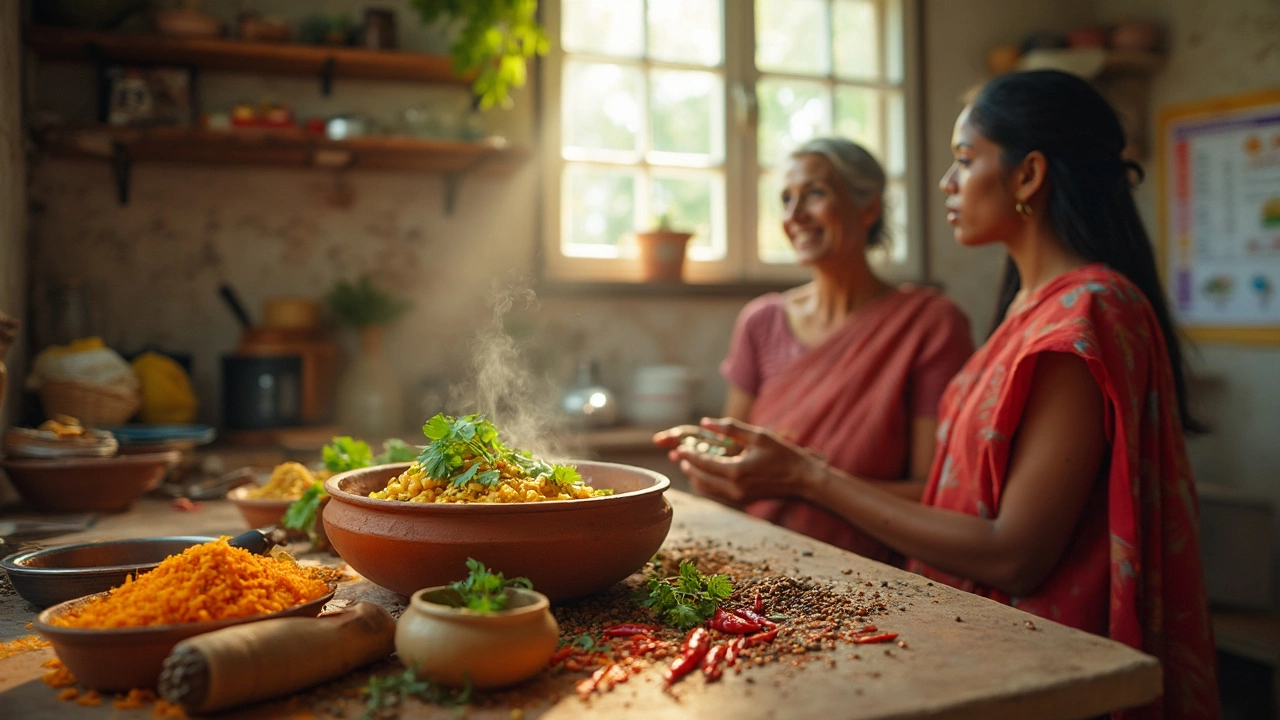Ever noticed how dal is the star of almost every Indian dinner table—yet some folks call it a superfood and others label it 'heavy' or even unhealthy? Let’s get real for a minute. The truth is, dal itself is just lentils, which are loaded with plant protein, fiber, and all kinds of minerals your body craves. It’s what you do with it in the kitchen that can flip it from healthy to not-so-great.
Straight out of the bag, moong dal, toor dal, masoor dal—whichever type you pick—has no trans fats, no cholesterol, and zero weird additives (unless you go for some of those flavored instant packets—more on that mess later). You're looking at something that’s naturally low in calories but surprisingly filling, making it a dream for anyone watching their waistline.
But—and this matters—dal can lose its healthy halo if you drown it in oil, cream, or those store-bought tadka mixes. The actual healthiness of your dal comes down to what you toss in the pot, and how much. Simple tweaks, like swapping ghee for a lighter oil or skipping that heavy cream, totally change the game.
- What’s Really in Dal?
- How Dal Impacts Your Health
- Dal Gone Wrong: When It Turns Junky
- Making Dal Healthier at Home
- Straightforward Simple Dal Recipe
What’s Really in Dal?
If you crack open a bag of plain dal—whether it’s moong, toor, masoor, or chana—you’ll find that it’s just dried split lentils or peas. There’s no secret sauce, no added junk, nothing weird mixed in. It’s one of those foods where what you see is what you get. Lentils have been around for over 8,000 years, making them one of the oldest staple foods on the planet.
What sets dal apart is its dal healthy punch: high protein, loads of dietary fiber, and a bunch of minerals you actually need. If you’re trying to cut down on carbs, some kinds like moong dal have fewer carbohydrates than most grains. Check this table out to see how the basics stack up (values per 100 grams, uncooked):
| Type | Calories | Protein (g) | Fiber (g) | Iron (mg) | Carb (g) |
|---|---|---|---|---|---|
| Moong Dal | 347 | 24.5 | 8.2 | 4.4 | 59.9 |
| Toor Dal | 343 | 22.3 | 15.0 | 3.0 | 62.0 |
| Masoor Dal | 352 | 24.6 | 11.7 | 6.5 | 60.1 |
| Chana Dal | 360 | 22.9 | 12.2 | 4.0 | 63.0 |
One thing people don’t always realize: you get some serious iron from dal—masoor dal especially. And the fiber? That helps keep you full, supports your gut, and eases digestion, so you’re not running to the snack drawer right after dinner.
What else? Lentils have no gluten and almost no fat, unless you add it. For allergy-prone families, they’re one of the safest staples out there. They’re also budget-friendly and have a long shelf life, so you’re not stuck with a ticking time bomb in your pantry.
If you’re watching nutrients, here’s a quick hack: sprout your dal. A day or two soaking and sprouting bumps up the vitamin C and makes some of that iron even easier to absorb. Cool, right?
How Dal Impacts Your Health
So what does a bowl of dal actually do for your body? First off, lentils pack a serious punch when it comes to protein—especially if you’re cutting back on meat or just want plant-based options. One cooked cup of regular dal like moong or masoor usually gives you about 8-9 grams of protein and nearly as much fiber. That’s great for keeping you full without the heavy, bloated feeling.
The fiber is a total win for your gut. It keeps things moving, helps lower cholesterol, and even evens out your blood sugar after meals. If you struggle with sugar spikes, dal is way friendlier than white rice or bread. Plus, the slow release of energy from dal means you don’t hit that afternoon slump so fast.
Dal’s not just about protein and fiber. You get a bonus serving of iron, potassium, magnesium, and a ton of B vitamins—stuff your body needs for real energy, not just a sugar rush. For anyone with low iron, dal can help, especially if you pair it with a squeeze of lemon which boosts absorption.
- Dal is naturally low in fat and has no cholesterol, making it heart-friendly.
- The combination of protein and fiber helps with weight management—hello, smaller portions and fewer snack cravings.
- Lentils are rich in antioxidants, which help your body deal with everyday stress (yes, food can help here).
But as with anything, portion control matters. If you drown your dal in butter or go for those takeaway versions loaded with cream, you lose most of these perks. The keyword here—dal healthy—comes down to how you prep it. Stick to basic cooking, use minimal oil, throw in veggies, and you’ve got a seriously solid meal that works for most lifestyles, even diabetic or heart-friendly diets.

Dal Gone Wrong: When It Turns Junky
If you think all dal is healthy, let’s call out the usual suspects that drag it into junk food territory. The big one is what some folks add during cooking. Too much ghee, butter, or heavy cream takes that simple dal healthy dish and seriously overloads it with saturated fat and unnecessary calories. There’s also the issue with packet or restaurant dals, which often pack in a surprising amount of salt and even sugar to bump up the flavor—so you end up eating way more sodium than you bargained for.
And it doesn’t stop there. Some people fry loads of onions, garlic, and spices in oil before pouring it over the cooked dal—sure, it tastes awesome, but it means you’re probably eating as much fat as you would scarfing down a serving of fries. Packaged instant dal mixes sometimes come with flavor enhancers and preservatives, which your body doesn’t exactly need.
Let’s break down some real numbers. Restaurant-style dal makhani can hit around 350-400 calories per serving, and more than half of that can come from fat added during cooking. Here’s a simple comparison:
| Type | Calories/Serving | Fat (g) | Sodium (mg) |
|---|---|---|---|
| Simple Home-Cooked Dal | 180 | 3 | 320 |
| Restaurant Dal Makhani | 400 | 24 | 960 |
| Instant Packaged Dal | 250 | 8 | 1180 |
So, dal isn’t always as innocent as it looks. Keep an eye on what goes in and how it’s cooked. If you’re after the real health benefits, skip the heavy-handed butter, keep salt in check, and avoid those convenience packets with mystery ingredients. Your heart (and your jeans) will thank you.
Making Dal Healthier at Home
If you want to make dal a true health food, it starts with what goes in the pot—simple swaps and a couple of smart habits go a long way. Skip the temptation to load up on ghee and heavy cream. You can make dal creamy by just cooking it a little longer or adding pureed veggies or a splash of coconut milk, which has less saturated fat per serving. Best part? Nobody’s taste buds feel cheated.
Let’s be honest, the tadka (that sizzling mix of oil and spices poured over the dal) can sneak in way more calories than you’d guess. Stick to 1-2 teaspoons of oil, use mustard oil or olive oil, and try dry roasting some spices for flavor instead of drowning everything in fat. For a vitamin boost, drop a handful of spinach, carrots, or tomatoes while the dal simmers. Fiber goes up, so does the satisfaction factor.
Wondering how the tweaks actually stack up? Here’s a quick look:
| Dal Version | Calories (per serving) | Total Fat (g) | Protein (g) | Fiber (g) |
|---|---|---|---|---|
| Heavy Cream & Ghee | 320 | 18 | 12 | 8 |
| Light Oil & Veggies | 180 | 6 | 13 | 11 |
You can see how each small change quickly adds up. Skip the deep-fried papad and heavy parathas. Grab plain rice or whole wheat roti alongside your dal healthy bowl. Want to go even lighter? Try moong dal soup with just a dash of black pepper and some lemon juice. It’s warm, filling, and actually helps cut down cravings for junk later in the day.
If you’ve got picky eaters at home, try tossing steamed veggies or a can of chickpeas into your dal for bonus nutrients. Batch-cooking dal for the week works too—it’s one of those rare meals that tastes better the next day. Prep it right, and you’ll never call dal "boring" again.

Straightforward Simple Dal Recipe
If you want a bowl of dal without the fuss or extra calories, you actually just need a handful of ingredients and about 25 minutes. This style is what most people in India whip up daily—not the heavy restaurant stuff. It’s loaded with nutrients, light on oil, and you can scale the salt and spice to fit your vibe. Here’s how to make it the smart way so you get all the good from lentils without any of the guilt.
- Rinse your dal. Take 1 cup of dried lentils (moong dal, toor dal, or masoor dal all work). Rinse under cold water till the water runs clear—takes out dust and that weird earthy smell.
- Boil or pressure cook. Add the dal to a pot with 3 cups water. Throw in 1/2 teaspoon turmeric and a pinch of salt. Bring to a boil, then simmer (or pressure cook for 3 whistles if you want to be quick).
- Prep the tadka. In a small pan, heat 1 tablespoon oil (olive, sunflower, or regular canola—just don’t drown it in ghee). Toss in: 1/2 teaspoon cumin seeds, 1 chopped garlic (optional), 1 small chopped tomato, and if you like spice, 1 chopped green chili. Cook for a couple of minutes till it smells good and tomatoes soften.
- Mix it up. Pour the tadka over your cooked dal. Stir well. Taste and adjust salt or spice. If you like your dal runnier, add some water and simmer for another minute.
- Garnish if you want. Fresh cilantro or a squeeze of lemon on top makes it pop, but it’s optional.
Now you’ve got a basic, everyday dal that nails flavor without extra fat or sodium. Check the nutrient stats—per standard bowl (about 200g), this is what an average homemade dal gives you:
| Nutrient | Amount per bowl |
|---|---|
| Protein | 7–9g |
| Fiber | 7g |
| Fat | 2–4g |
| Sodium | about 200mg (depends on added salt) |
| Calories | 130–150 |
If you want your dal healthy, remember: don’t skimp on rinsing, cook with minimal oil, and keep the extras simple. Dal on its own is naturally great, so you don’t need much to make it shine.
